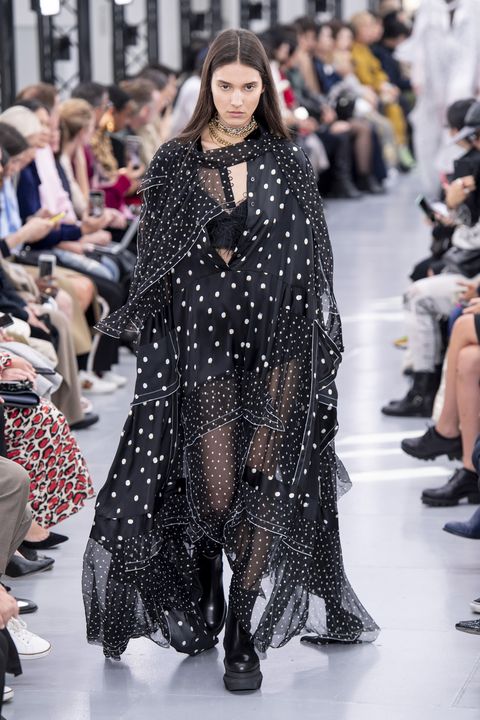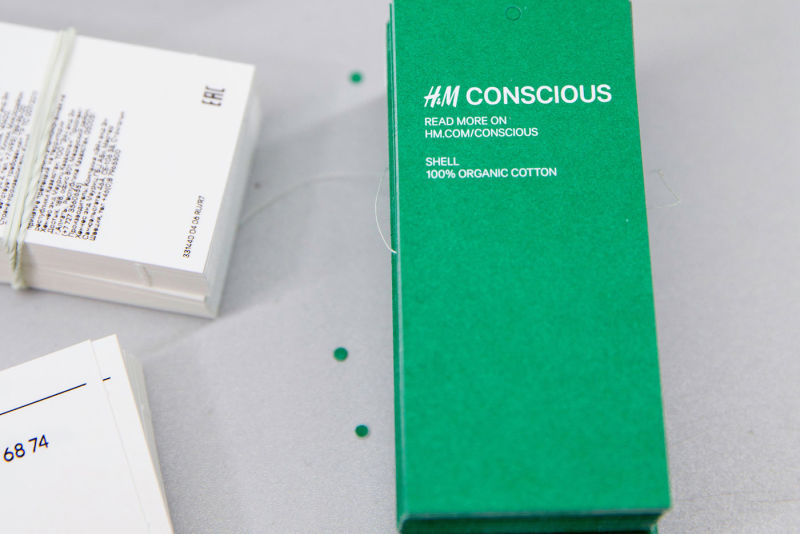When it comes to the fast fashion industry and green marketing there are two things that come to my mind. One, the incredible amount of waste in raw materials and turnover in finished goods and two, the intense marketing efforts made by the industry as a whole. It’s no secret that the industry creates waste at every step of the supply chain whether it be the use of toxic dyes in the manufacturing process, the fossil fuels burned in the shipping process, or the fact that any piece of clothing will sit in a landfill for generations in the disposal process. In recent years, major fast fashion brands have seen a reckoning in the calls to boycott their brands, instead opting for more responsible consumption. The response from these fast fashion brands? – Create a new “green” product line.
 Source: Elle
Source: Elle
Two of the world’s biggest fast fashion giants H&M and Zara launched their eco fashion lines called Conscious and Join Life, in response to the growing consumer demands for sustainability. As UBC Sauder professor Katherine White says in her research, the consumer decision process is really beginning to shift, consumers are taking notice of sustainability and businesses to need know how to adapt. Taking these initiatives at face value, they may seem quite good. The companies are actually trying to take a step forward into reducing the impact of their products. H&M claims that the products from their line are made from at least 50% sustainably sourced materials. But, at the end of the day, what the heck does that mean?? These labels all sound good, but are they actually reducing impact? What does “Conscious” mean? What does “Join Life” mean? Look at the picture below! Does green automatically mean good?? To me it just seems very abstract titles to things that may not necessarily be good for the environment.
 Source: H&M
Source: H&M
This reminds me of one the class discussions we had with labelling, there are literally so many organizations and standards out there now, its really hard, especially for an average consumer to discern any meaning and difference between the various products on the market, what do they actually mean and how impactful are they? As it relates to fast fashion, I think following Patagonia founder Yvon Chouinard‘s mantra is the best way forward, ignore all the fancy labels, green or not. Just simply consume less, and you’ll be doing the world a great favour.
Hi Simon! I couldn’t agree with you more that this shift to “green” product lines results from consumers demanding change. I remember I went to H&M in Sweden four years ago and was shocked to see what a difference their brand image was compared to back in Canada. Conscious was labelled all around the store, and it was difficult to find their classic logos anywhere. I guess the consumers had to demand a change, but I don’t think the burden should fall on consumers, and there should be a greater drive from corporations to embrace the role they play in sustainability and the massive impact they make.
Totally agree with you on this topic Simon. The H&M Conscious line seems to me as a big greenwashing initiative that uses green labeling such as “eco-friendly” and “sustainable fibre” to divert public attention away from its fast fashion business model. It’s actually interesting because things like recyclable material and eco-friendly alternatives are quantifiable, making it easy for H&M to portray an image of transparency. However, let’s not forget that no matter how much sustainable material is used, the fast fashion business model is unsustainable. To truly reach sustainability, companies need to market “reduce” over anything else. By producing less, purchasing less, consuming less, and disposing less will we lessen our impact on the planet.